Eigenmetabolite Stratification Brain
Ann Wells
April 23, 2023
Introduction and Data files
This dataset contains nine tissues (heart, hippocampus, hypothalamus, kidney, liver, prefrontal cortex, skeletal muscle, small intestine, and spleen) from C57BL/6J mice that were fed 2-deoxyglucose (6g/L) through their drinking water for 96hrs or 4wks. 96hr mice were given their 2DG treatment 2 weeks after the other cohort started the 4 week treatment. The organs from the mice were harvested and processed for metabolomics and transcriptomics. The data in this document pertains to the transcriptomics data only. The counts that were used were FPKM normalized before being log transformed. It was determined that sample A113 had low RNAseq quality and through further analyses with PCA, MA plots, and clustering was an outlier and will be removed for the rest of the analyses performed. This document will determine the overall summary expression of each module across the main effects, as well as, assess the significance of each main effect and their interaction, using ANOVA, for each module and assess potential interactions visually for each module.
needed.packages <- c("tidyverse", "here", "functional", "gplots", "dplyr", "GeneOverlap", "R.utils", "reshape2","magrittr","data.table", "RColorBrewer","preprocessCore", "ARTool","emmeans", "phia", "gProfileR", "WGCNA","plotly", "pheatmap","pander", "kableExtra")
for(i in 1:length(needed.packages)){library(needed.packages[i], character.only = TRUE)}
source(here("source_files","WGCNA_source.R"))
source(here("source_files","plot_theme.R"))tdata.FPKM.sample.info <- readRDS(here("Data","20190406_RNAseq_B6_4wk_2DG_counts_phenotypes.RData"))
tdata.FPKM <- readRDS(here("Data","20190406_RNAseq_B6_4wk_2DG_counts_numeric.RData"))
log.tdata.FPKM <- log(tdata.FPKM + 1)
log.tdata.FPKM <- as.data.frame(log.tdata.FPKM)
log.tdata.FPKM.sample.info <- cbind(log.tdata.FPKM, tdata.FPKM.sample.info[,27238:27240])
log.tdata.FPKM.sample.info <- log.tdata.FPKM.sample.info %>% rownames_to_column() %>% filter(rowname != "A113") %>% column_to_rownames()
log.tdata.FPKM.subset <- log.tdata.FPKM[,colMeans(log.tdata.FPKM != 0) > 0.5]
log.tdata.FPKM.sample.info.subset <- cbind(log.tdata.FPKM.subset,tdata.FPKM.sample.info[,27238:27240])
log.tdata.FPKM.sample.info.subset <- log.tdata.FPKM.sample.info.subset %>% rownames_to_column() %>% filter(rowname != "A113") %>% column_to_rownames()
log.tdata.FPKM.sample.info.subset.hip.hyp.cortex <- log.tdata.FPKM.sample.info.subset %>% rownames_to_column() %>%
filter(Tissue %in% c("Pre-frontal Cortex","Hippocampus","Hypothanamus")) %>%
column_to_rownames()
log.tdata.FPKM.sample.info.subset.hip.hyp.cortex$Treatment[log.tdata.FPKM.sample.info.subset.hip.hyp.cortex$Treatment=="None"] <- "Control"
log.tdata.FPKM.sample.info.subset.hip.hyp.cortex <- cbind(log.tdata.FPKM.sample.info.subset.hip.hyp.cortex, Time.Treatment = paste(log.tdata.FPKM.sample.info.subset.hip.hyp.cortex$Time,log.tdata.FPKM.sample.info.subset.hip.hyp.cortex$Treatment), Time.Tissue = paste(log.tdata.FPKM.sample.info.subset.hip.hyp.cortex$Time,log.tdata.FPKM.sample.info.subset.hip.hyp.cortex$Tissue), Tissue.Treatment = paste(log.tdata.FPKM.sample.info.subset.hip.hyp.cortex$Tissue,log.tdata.FPKM.sample.info.subset.hip.hyp.cortex$Treatment), Time.Treatment.Tissue = paste(log.tdata.FPKM.sample.info.subset.hip.hyp.cortex$Time, log.tdata.FPKM.sample.info.subset.hip.hyp.cortex$Treatment,log.tdata.FPKM.sample.info.subset.hip.hyp.cortex$Tissue))
module.labels <- readRDS(here("Data","Brain","log.tdata.FPKM.sample.info.subset.hip.hyp.cortex.WGCNA.module.labels.RData"))
module.eigens <- readRDS(here("Data","Brain","log.tdata.FPKM.sample.info.subset.hip.hyp.cortex.WGCNA.module.eigens.RData"))
modules <- readRDS(here("Data","Brain","log.tdata.FPKM.sample.info.subset.hip.hyp.cortex.WGCNA.module.membership.RData"))
net.deg <- readRDS(here("Data","Brain","Chang_2DG_BL6_connectivity_hip_hyp_cortex.RData"))
ensembl.location <- readRDS(here("Data","Ensembl_gene_id_and_location.RData"))Eigengene Stratification
Eigengene were stratified by time and treatment. The heatmap is a matrix of the average eigengene value for each level of the trait.
factors <- c("Time","Treatment","Tissue","Time.Treatment","Time.Tissue","Tissue.Treatment","Time.Treatment.Tissue")
eigenmetabolite(factors,log.tdata.FPKM.sample.info.subset.hip.hyp.cortex)Time

Treatment

Tissue

Time.Treatment
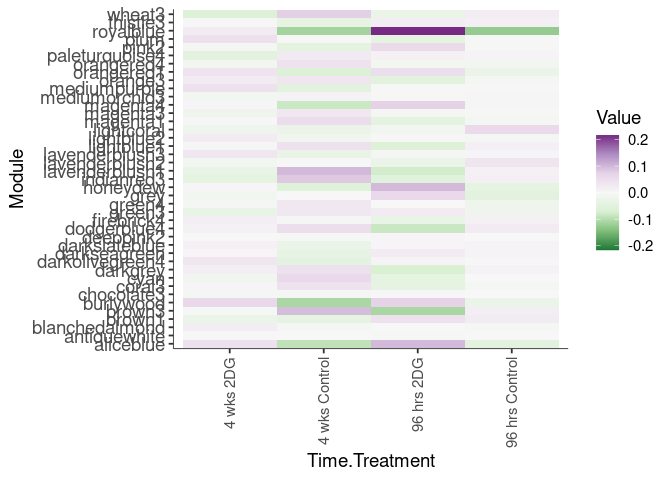
Time.Tissue
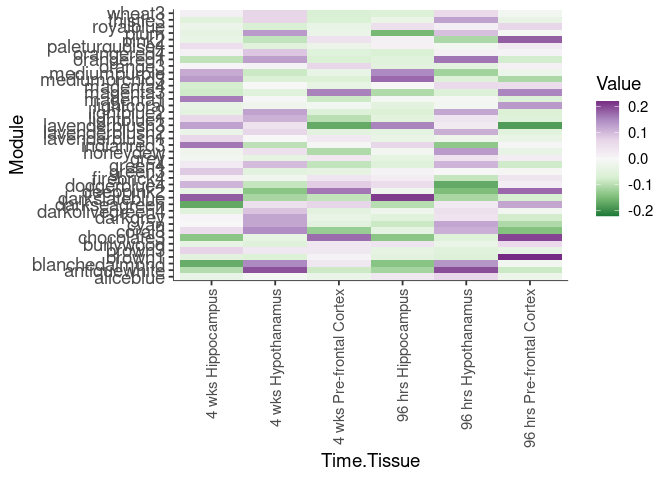
Tissue.Treatment
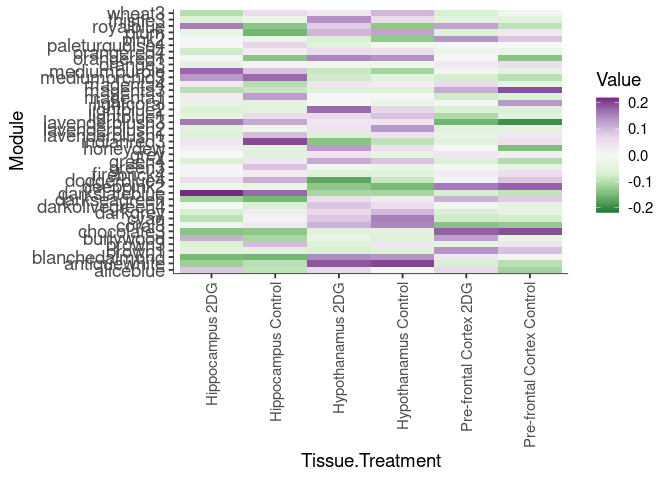
Time.Treatment.Tissue
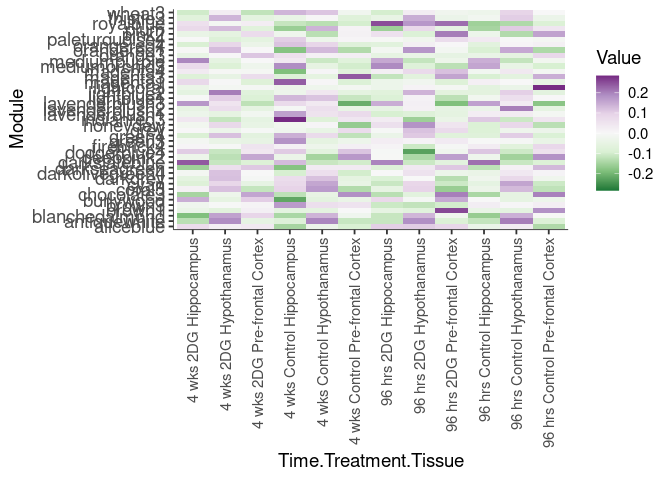
ANOVA
An ANOVA was performed for each module. The full model is y ~ time + treatment + time:treatment.
# Three-Way ANOVA for each Eigenmetabolite
model.data = dplyr::bind_cols(module.eigens[rownames(log.tdata.FPKM.sample.info.subset.hip.hyp.cortex),], log.tdata.FPKM.sample.info.subset.hip.hyp.cortex[,c("Time","Treatment","Tissue")])
model.data$Time <- as.factor(model.data$Time)
model.data$Tissue <- as.factor(model.data$Tissue)
model.data$Treatment <- as.factor(model.data$Treatment)
final.anova <- list()
for (m in colnames(module.eigens)) {
a <- art(data = model.data, model.data[,m] ~ Time*Treatment*Tissue)
model <- anova(a)
adjust <- p.adjust(model$`Pr(>F)`, method = "BH")
name <- sapply(str_split(colnames(module.eigens[m]),"_"),"[",2)
final.anova[[m]] <- cbind(model, adjust)
}Antiquewhite Module
DT.table(final.anova[[1]])Cyan Module
DT.table(final.anova[[2]])Lavenderblush1 Module
DT.table(final.anova[[3]])Darkolivegreen4 Module
DT.table(final.anova[[4]])Darkgrey Module
DT.table(final.anova[[5]])Brown3 Module
DT.table(final.anova[[6]])Orangered1 Module
DT.table(final.anova[[7]])Deeppink2 Module
DT.table(final.anova[[8]])Grey Module
DT.table(final.anova[[9]])Magenta1 Module
DT.table(final.anova[[10]])Mediumpurple Module
DT.table(final.anova[[11]])Darkslateblue Module
DT.table(final.anova[[12]])Magenta4 Module
DT.table(final.anova[[13]])Firebrick4 Module
DT.table(final.anova[[14]])Honeydew Module
DT.table(final.anova[[15]])Brown1 Module
DT.table(final.anova[[16]])Coral3 Module
DT.table(final.anova[[17]])Royalblue Module
DT.table(final.anova[[18]])Green3 Module
DT.table(final.anova[[19]])Lavenderblush3 Module
DT.table(final.anova[[20]])Green4 Module
DT.table(final.anova[[21]])Lightblue1 Module
DT.table(final.anova[[22]])Magenta3 Module
DT.table(final.anova[[23]])Blanchedalmond Module
DT.table(final.anova[[24]])Orangered4 Module
DT.table(final.anova[[25]])Darkseagreen Module
DT.table(final.anova[[26]])Paleturquoise4 Module
DT.table(final.anova[[27]])Chocolate3 Module
DT.table(final.anova[[28]])Indianred3 Module
DT.table(final.anova[[29]])Plum Module
DT.table(final.anova[[30]])Lightcoral Module
DT.table(final.anova[[31]])Aliceblue Module
DT.table(final.anova[[32]])Burlywood Module
DT.table(final.anova[[33]])Thistle3 Module
DT.table(final.anova[[34]])Lavenderblush2 Module
DT.table(final.anova[[35]])Pink2 Module
DT.table(final.anova[[36]])Lightblue2 Module
DT.table(final.anova[[37]])Wheat3 Module
DT.table(final.anova[[38]])Mediumorchid3 Module
DT.table(final.anova[[39]])Orange3 Module
DT.table(final.anova[[40]])Dodgerblue4 Module
DT.table(final.anova[[41]])Interaction plots
Interaction plots were created to identify which modules have a potential interaction between time and treatment. A potential interaction is identified when the two lines cross.
for (m in module.labels) {
p = plot.interaction(model.data, "Time", "Treatment","Tissue", resp = m)
name <- sapply(str_split(m,"_"),"[",2)
cat("\n###",name,"\n")
print(p)
cat("\n \n")
}antiquewhite

cyan
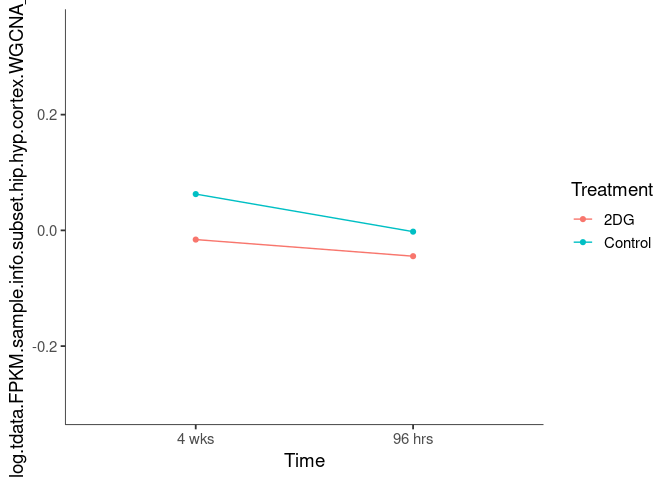
lavenderblush1
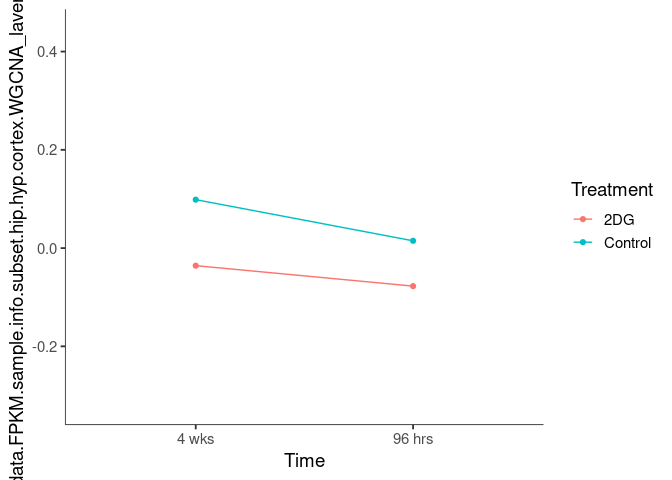
darkolivegreen4
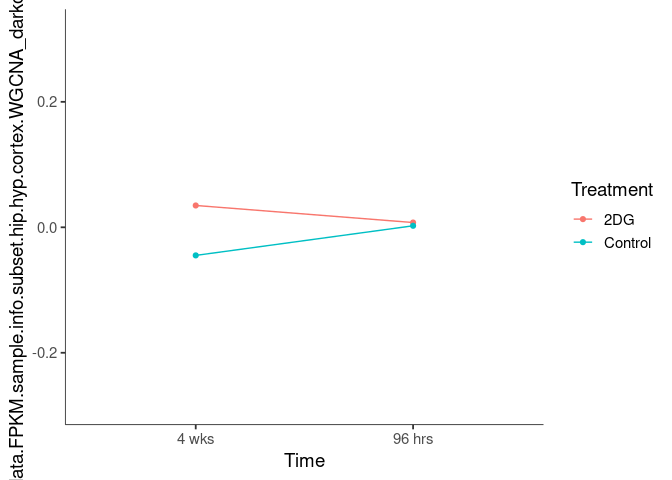
darkgrey
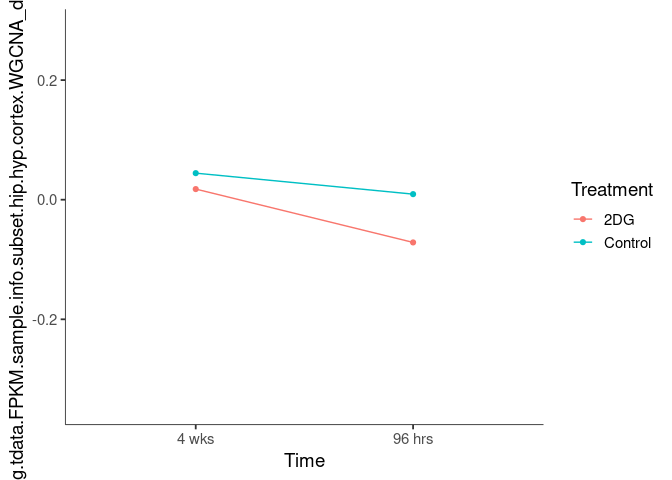
brown3
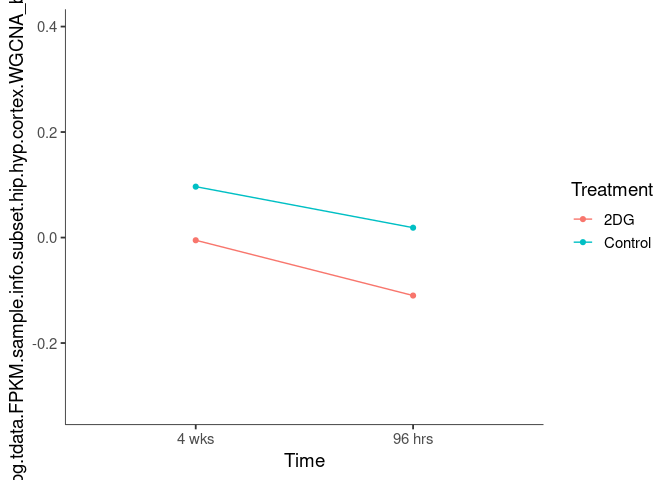
orangered1
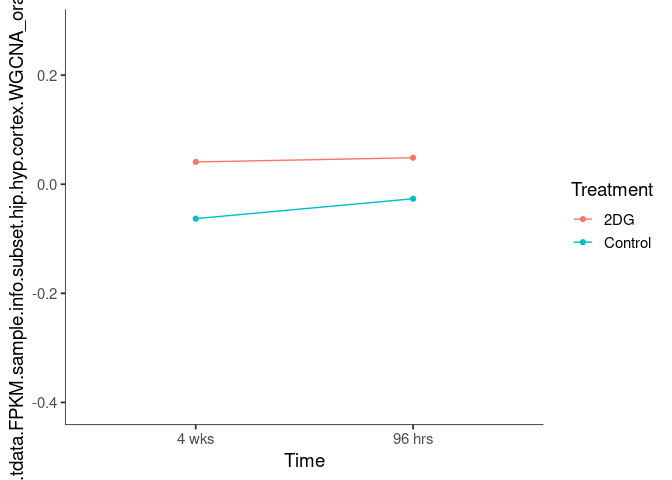
deeppink2
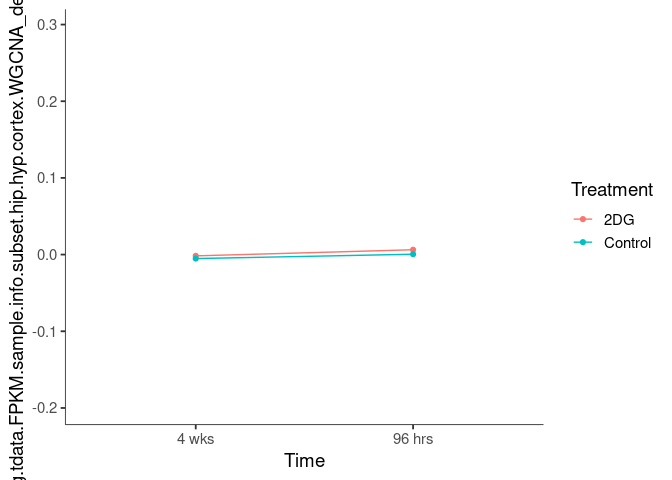
grey
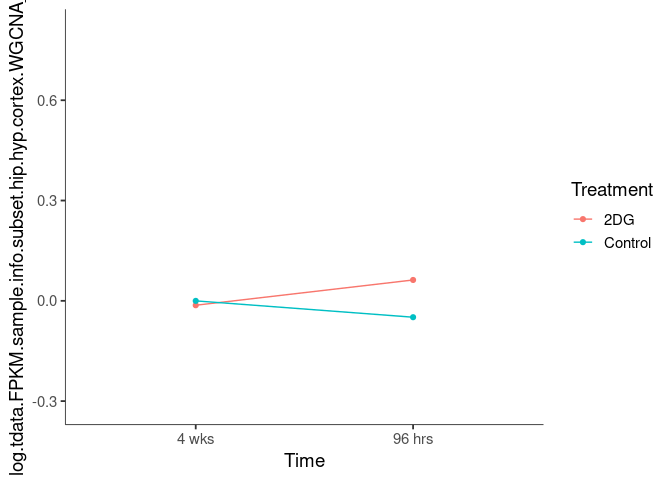
magenta1
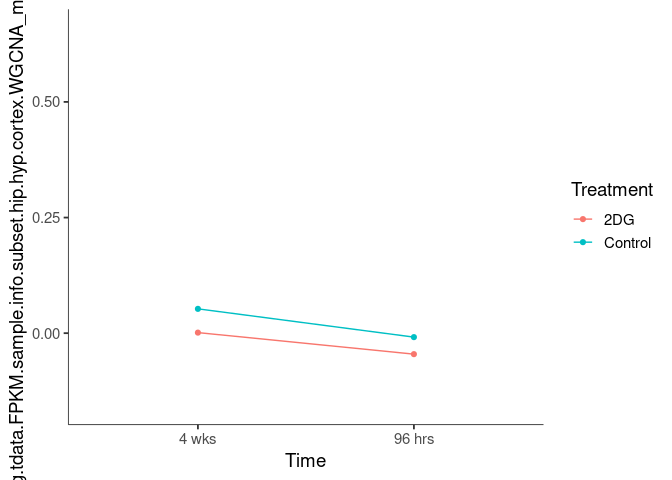
mediumpurple
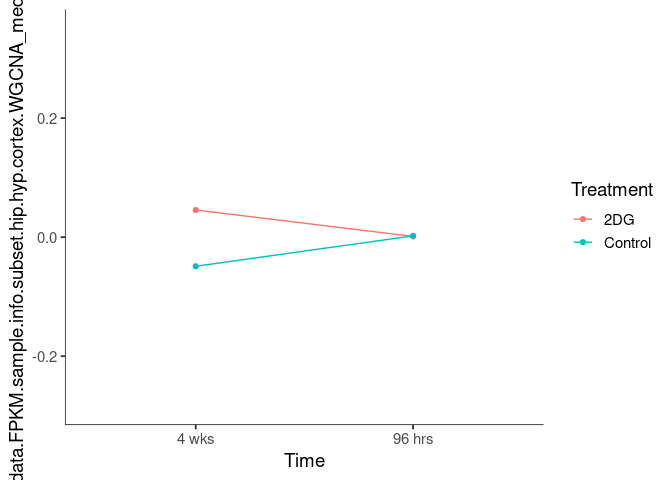
darkslateblue
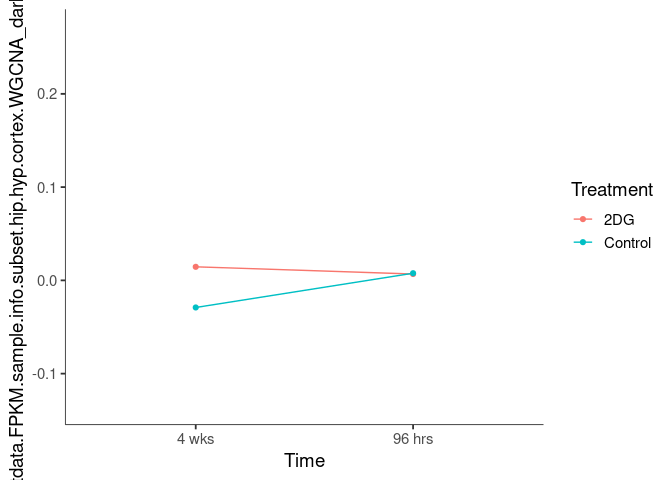
magenta4
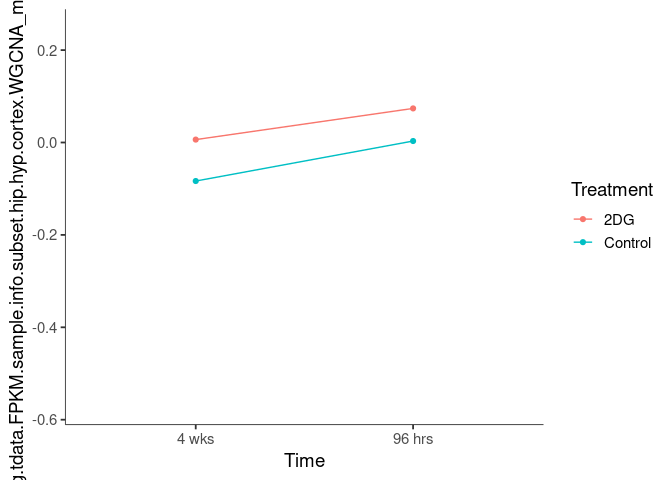
firebrick4
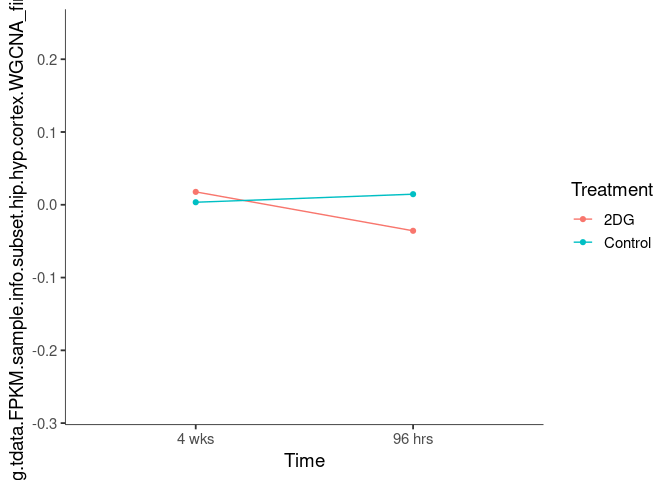
honeydew
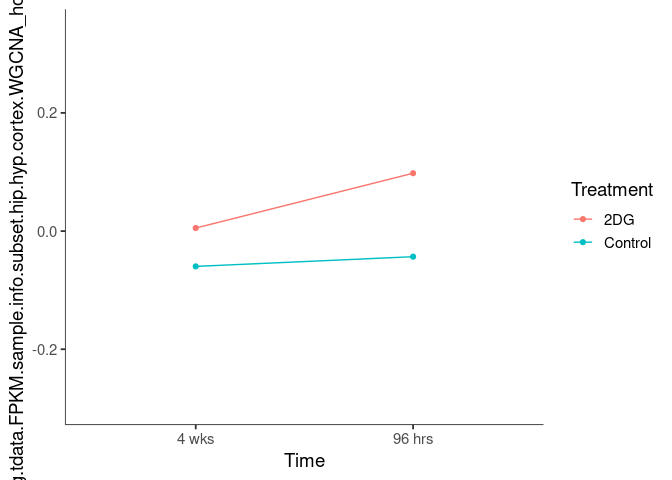
brown1
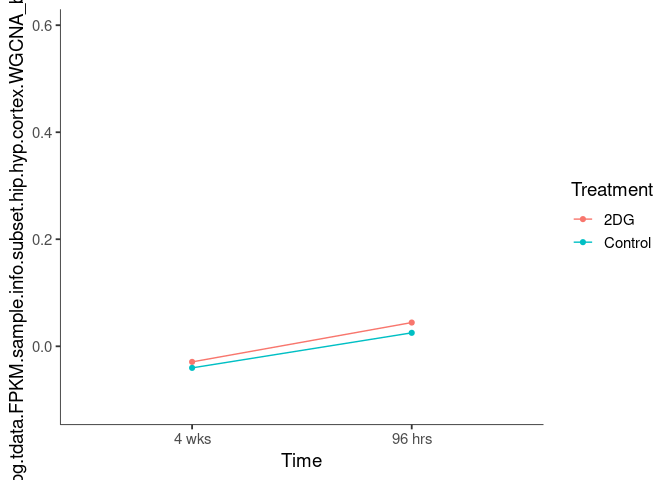
coral3
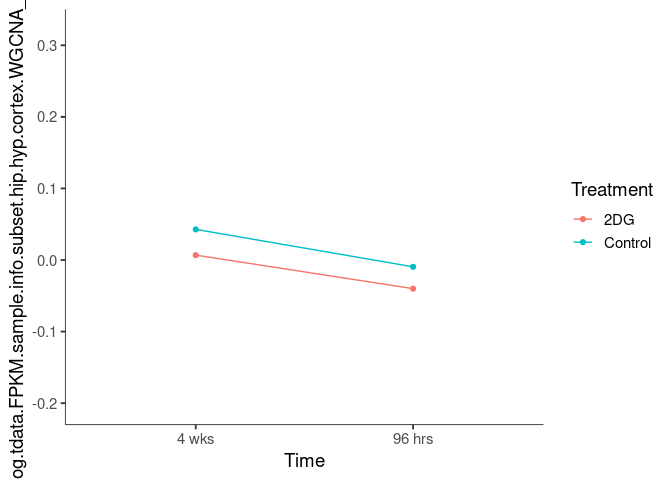
royalblue
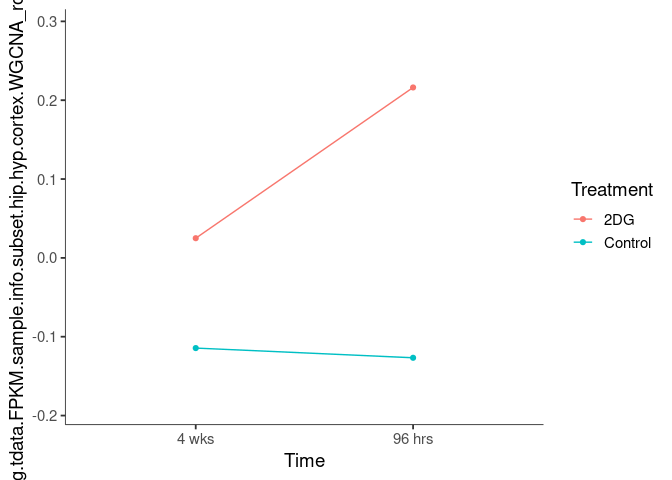
green3
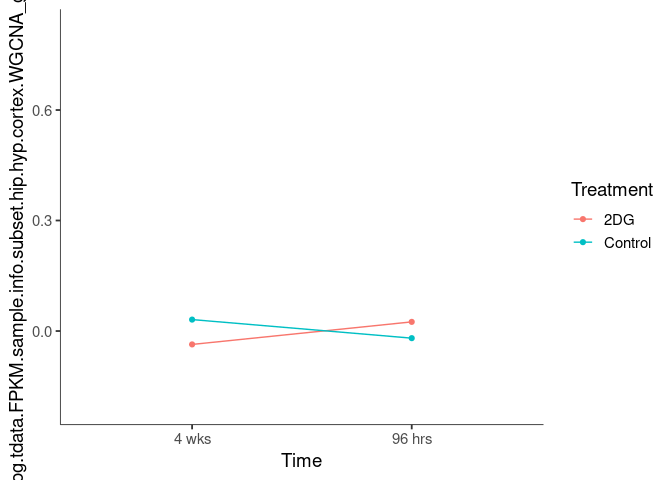
lavenderblush3
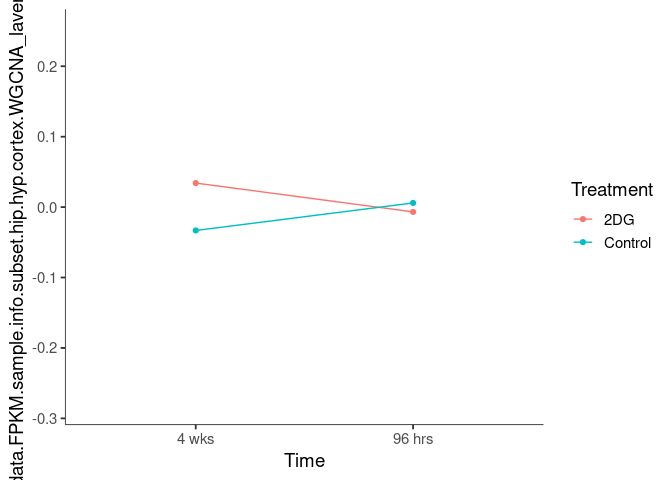
green4
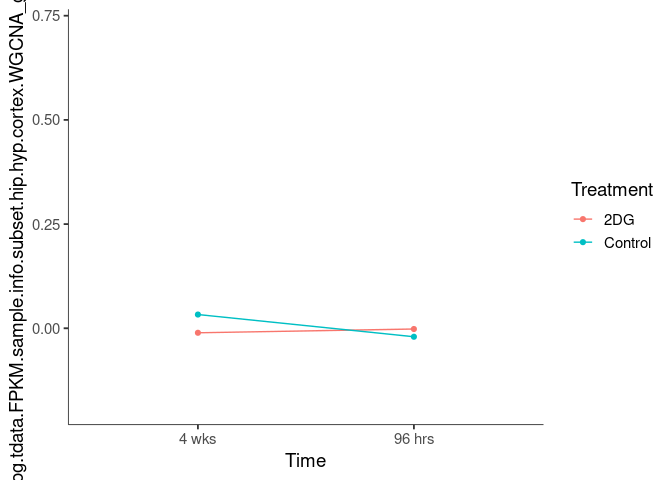
lightblue1
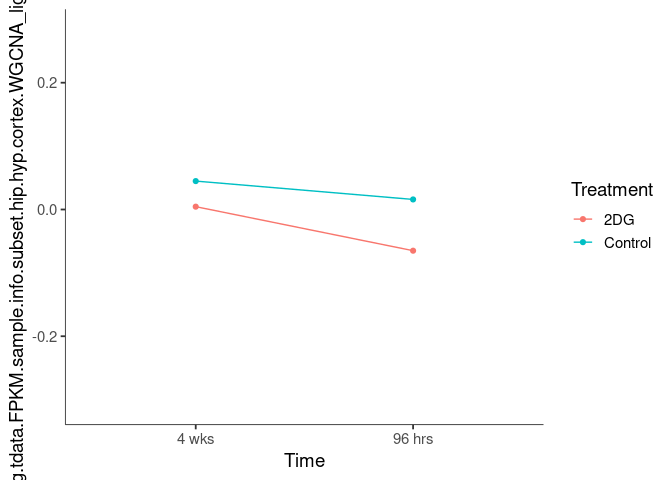
magenta3
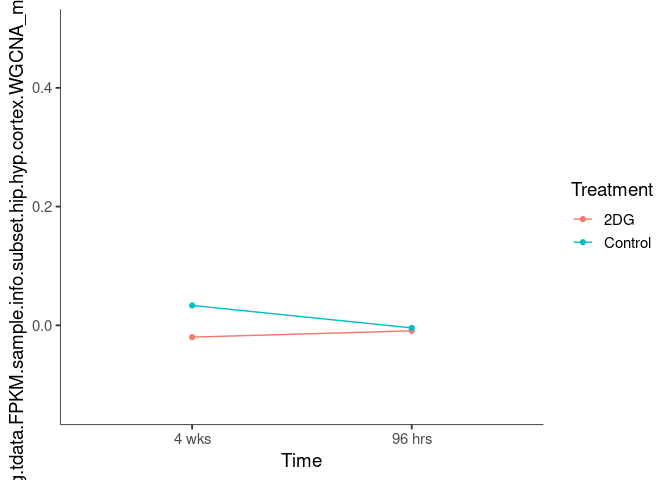
blanchedalmond
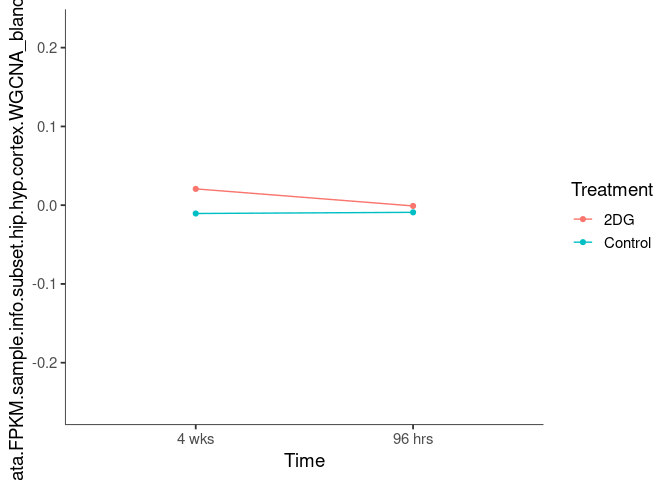
orangered4
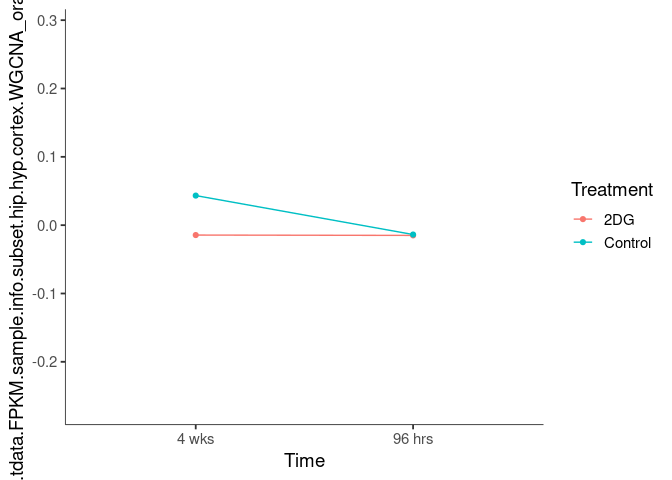
darkseagreen
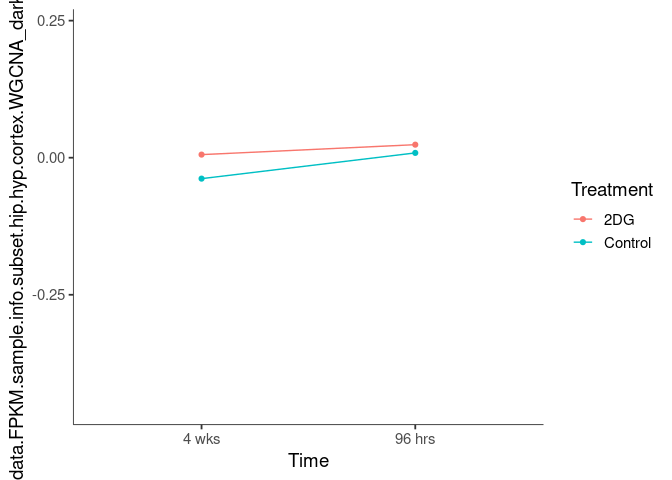
paleturquoise4
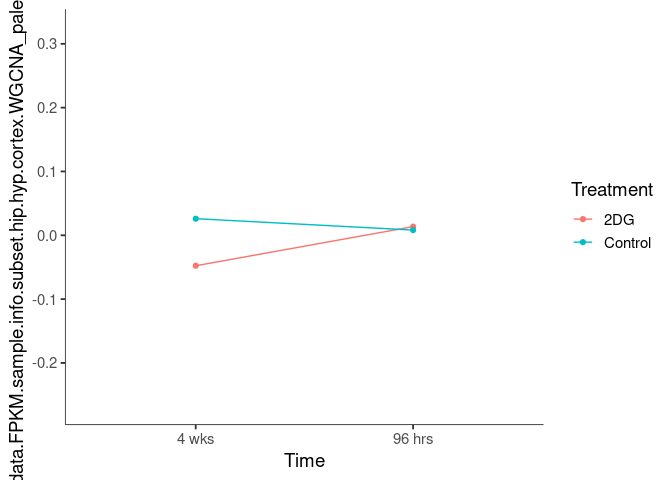
chocolate3
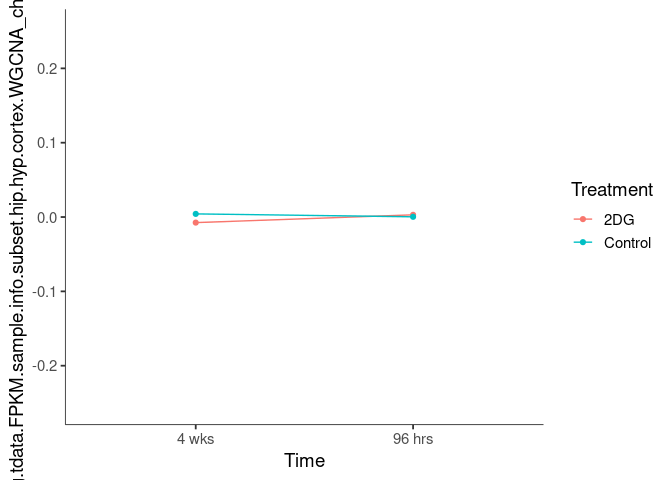
indianred3
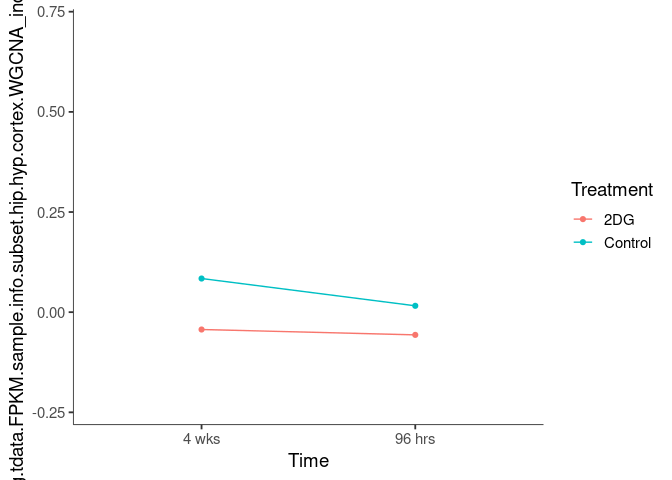
plum
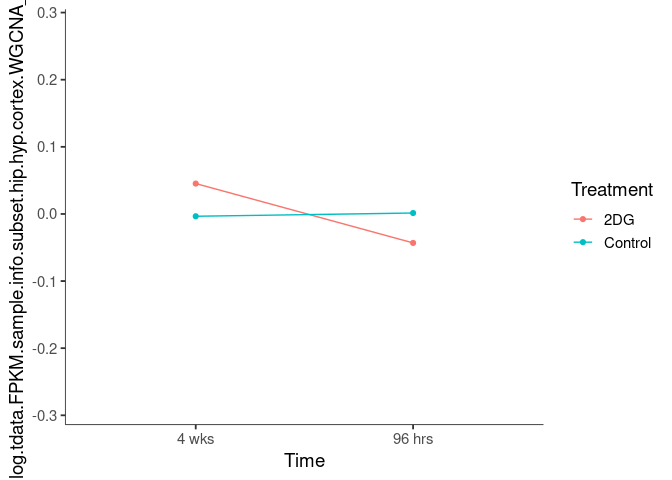
lightcoral
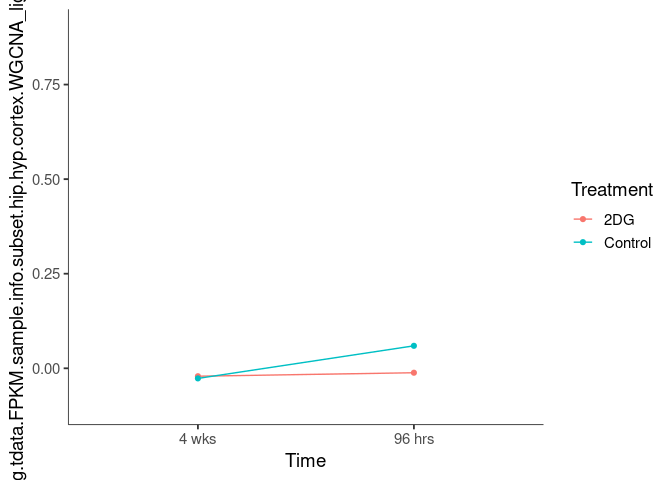
aliceblue
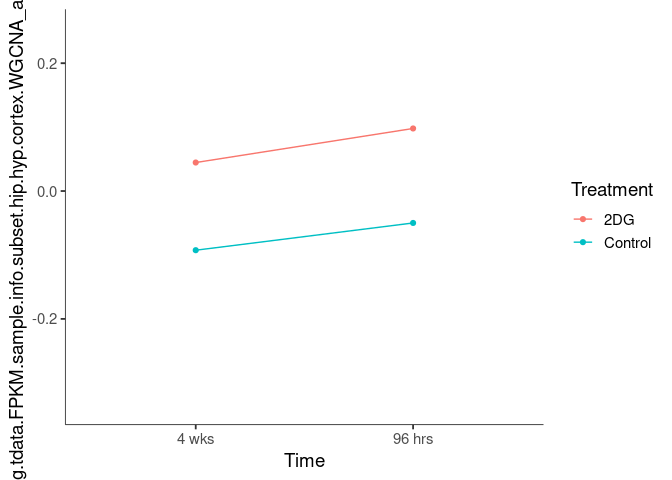
burlywood
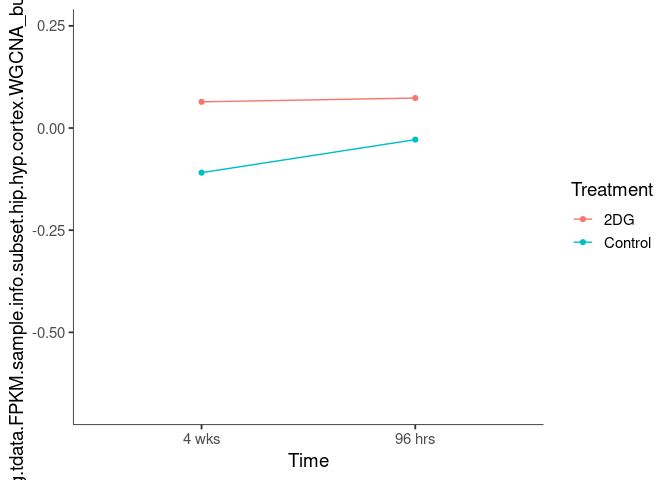
thistle3
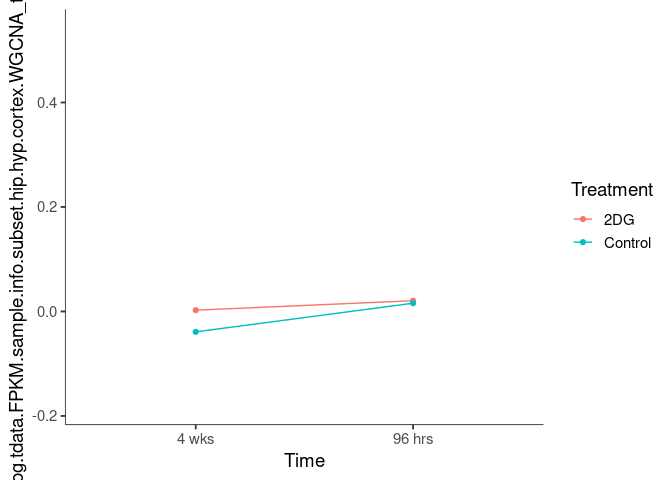
lavenderblush2
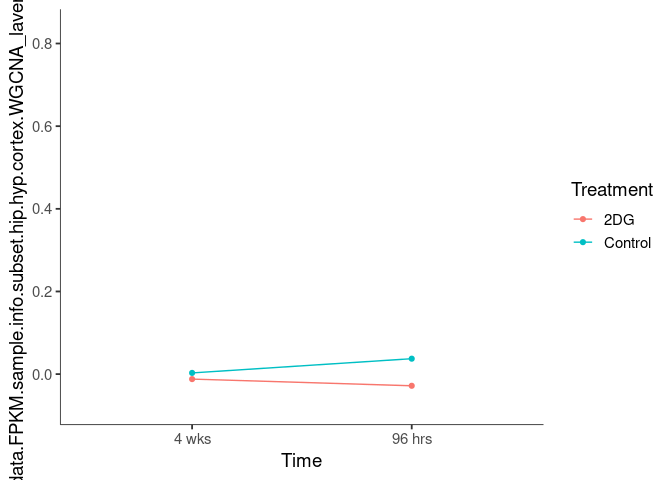
pink2
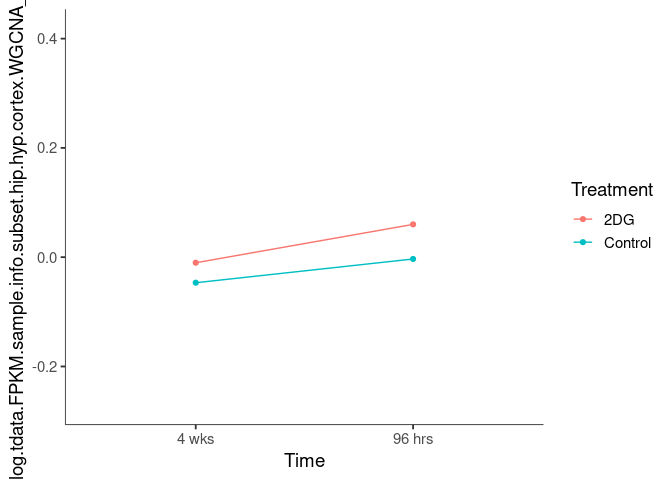
lightblue2
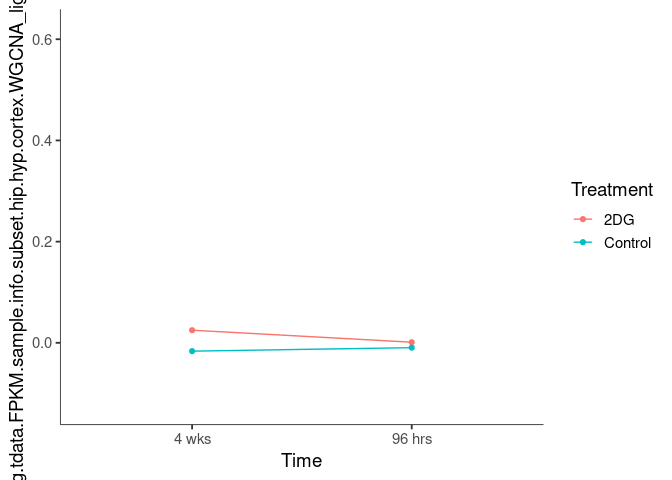
wheat3
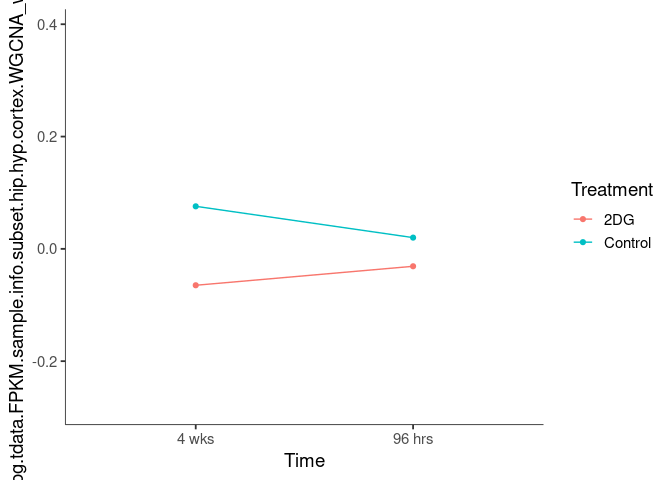
mediumorchid3
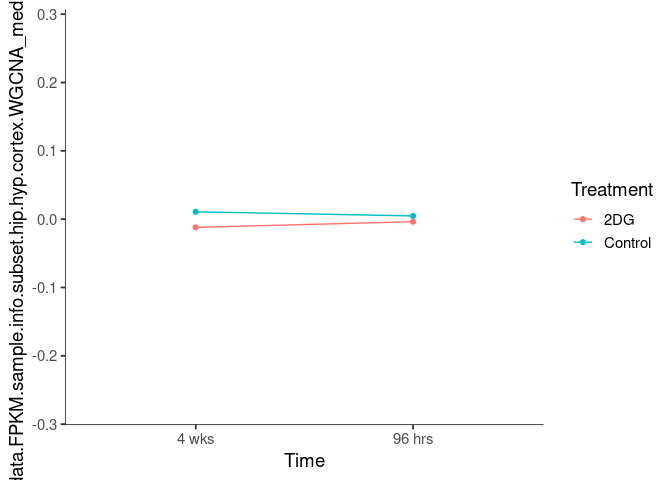
orange3
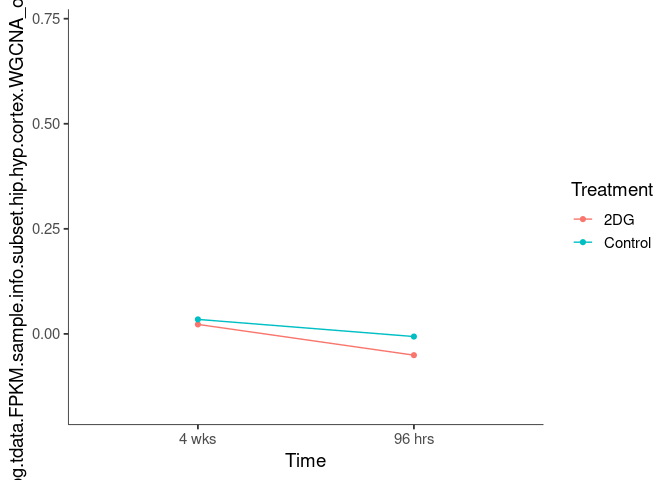
dodgerblue4
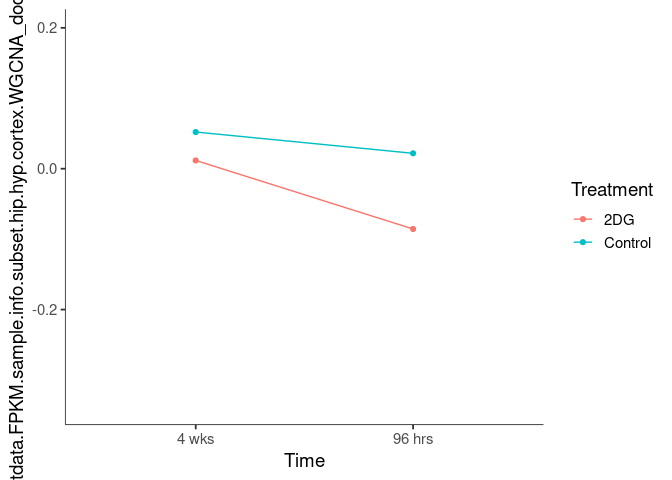
Analysis performed by Ann Wells
The Carter Lab The Jackson Laboratory 2023
ann.wells@jax.org